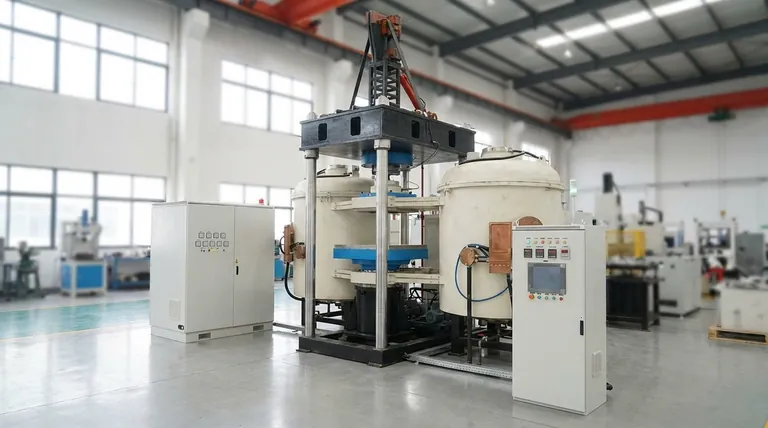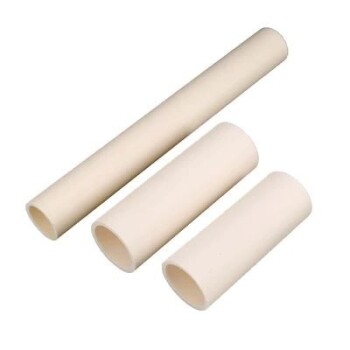To put it directly, the size of the induction furnace market is defined by its essential role across global heavy industry. While specific revenue figures fluctuate and require specialized market reports, the market's significance is demonstrated by its widespread adoption in foundational sectors like steel production, advanced manufacturing, and precious metal refining. Its scale is a direct reflection of the global demand for efficient and precise metal processing.
The true measure of the induction furnace market isn't just a dollar figure, but its foundational role in modern metallurgy. Its growth is directly tied to the global push for greater energy efficiency, material purity, and production speed in core industrial sectors.

What Drives the Induction Furnace Market?
Understanding the market's size requires looking at the fundamental technical advantages that are causing industries to adopt this technology over traditional alternatives. These drivers explain why the market is substantial and growing.
The Demand for Efficiency and Speed
Induction furnaces use electromagnetic fields to generate heat directly within the metal itself. This process is significantly faster and more energy-efficient than conventional fuel-fired furnaces, which must first heat the chamber before transferring that heat to the material.
This translates to lower energy costs per ton and higher production throughput, which are powerful economic incentives for any industrial operation.
The Pursuit of Purity and Control
The induction process allows for extremely precise temperature control and creates a natural stirring action within the molten metal. This homogenizes the melt and helps bring impurities to the surface to be removed.
As a result, industries can produce higher-quality, cleaner metals and complex alloys with consistent, repeatable properties. This is critical for high-performance applications in engineering and manufacturing.
A Shift Toward Cleaner Operations
Unlike blast furnaces or cupolas that burn fossil fuels, induction furnaces are powered by electricity and produce virtually zero local emissions.
As environmental regulations tighten and companies pursue sustainability goals, the shift to cleaner electric melting technology becomes a strategic necessity, further fueling market demand.
Key Industrial Applications
The market's breadth is best understood by looking at where these furnaces are deployed. They are not a niche technology but a workhorse for critical industries.
Steel Production and Foundries
This is the largest segment. Induction furnaces are ideal for melting scrap steel and iron, forming the backbone of the metal recycling industry. Foundries rely on them to produce high-quality castings for everything from automotive parts to industrial machinery.
Mining and Precious Metals
The ability to handle smaller, high-value batches with precision makes induction furnaces essential in the mining sector. They are widely used for applications like gold smelting, where material purity and minimizing metal loss are paramount.
Advanced Manufacturing and Engineering
Industries like aerospace, automotive, and medical device manufacturing depend on specialized alloys with exacting specifications. Induction furnaces provide the control needed to create these high-performance materials, from titanium alloys to stainless steels.
Understanding the Trade-offs
No technology is without its limitations. An objective assessment requires acknowledging the challenges associated with induction melting.
High Initial Capital Investment
Induction furnace systems represent a significant upfront cost compared to some older technologies. The furnace itself, along with the necessary power supplies and cooling systems, requires substantial investment.
Reliance on Electrical Infrastructure
These furnaces have high power requirements. Their feasibility depends on access to a stable, robust, and often high-voltage electrical grid. This can be a limiting factor in regions with underdeveloped infrastructure.
Batch Processing Nature
While highly efficient for specific volumes, most induction furnaces operate in a batch process (melt, pour, recharge). This differs from the continuous flow of a very large, traditional blast furnace, making them better suited for specialty metals and recycling rather than mass commodity steel production.
Evaluating the Market's Relevance to Your Goal
How you view the induction furnace market depends entirely on your objective. Use these points to frame your analysis.
- If your primary focus is market opportunity: Recognize that growth is driven by industrial modernization, the scrap metal recycling boom, and global sustainability initiatives.
- If your primary focus is technical application: Concentrate on the superior control, efficiency, and purity that induction offers for producing high-value alloys and clean metals.
- If your primary focus is industry analysis: Frame the market size not as a static number, but as a key indicator of the metallurgical industry's shift from fossil fuels to cleaner electric processes.
Ultimately, understanding the fundamental drivers behind the induction furnace market provides a far clearer picture of its significance than any single number.
Summary Table:
| Market Driver | Key Impact |
|---|---|
| Energy Efficiency | Lower operational costs and faster melting vs. fuel-fired furnaces. |
| Material Purity | Precise temperature control for cleaner metals and advanced alloys. |
| Cleaner Operations | Zero local emissions, aligning with global sustainability goals. |
| Core Applications | Steel foundries, precious metal refining, and advanced manufacturing. |
Ready to leverage the power of induction melting for your lab or production facility?
KINTEK specializes in high-performance lab equipment and consumables, serving the precise needs of laboratories and R&D centers. Whether you are developing new alloys, refining precious metals, or require reliable melting solutions, our expertise ensures you get the efficiency and control your work demands.
Contact our experts today to discuss how our solutions can enhance your metallurgical processes and help you achieve superior results.
Visual Guide

Related Products
- 600T Vacuum Induction Hot Press Furnace for Heat Treat and Sintering
- 1700℃ Laboratory Quartz Tube Furnace with Alumina Tube Tubular Furnace
- 1800℃ Muffle Oven Furnace for Laboratory
- Ultra-High Temperature Graphite Vacuum Graphitization Furnace
- 1700℃ Muffle Oven Furnace for Laboratory
People Also Ask
- What is the advantage by using hot press forming? Achieve Stronger, More Complex Parts
- Why are brazed joints subjected to fatigue failure? Understanding the Critical Factors for Long-Lasting Joints
- Is brazing or welding cheaper? A Detailed Cost Analysis for Your Project
- What does bond strength depend on in braze welding? Master the 3 Keys to a Strong Joint
- What is vacuum hot pressing? Achieve Maximum Density & Purity in Advanced Materials



















